#tilting EVFs
Text
Sony a6100 Mirrorless Camera with 16-50mm Lens
…………………………………………………………………………
Buy Now 🛒: Ksh. 85,000/- 🔥
…………………………………………………………………………
- 24.2MP APS-C Exmor CMOS Sensor
- BIONZ X Image Processor
- UHD 4K30p and Full HD 120p Video
- SVGA Tru-Finder 1.44m-Dot OLED EVF
- 3.0" 921.6k-Dot 180° Tilting Touchscreen
- Up to 11-fps Shooting, ISO 100-32000
- 4D FOCUS with 425 Phase-Detect Points
- Real-Time Eye AF and Subject Tracking
- Built-In Wi-Fi and Bluetooth
- E PZ 16-50mm f/3.5-5.6 OSS Lens
Bundling the sleek mirrorless body with a versatile zoom, the Sony a6100 Mirrorless Camera with 16-50mm Lens pairs the compact APS-C camera with the E PZ 16-50mm f/3.5-5.6 OSS zoom lens.
Authorised Distributor for Sony in KE
🛒Order through DM or WhatsApp +254 721 103 294.
Follow us: https://www.instagram.com/camerastuffkenya/
https://www.instagram.com/camerastuffkenya/
We Deliver Countrywide!
🛍️Buy Photography and Videography equipment in Nairobi Kenya
https://www.instagram.com/camerastuffkenya/
#camerastuffkenya#gainwiththeepluto#nairobikenya#photooftheday#night photography#photography blog#africa#photographers on tumblr
0 notes
Text
Sony A7R V hands-on review
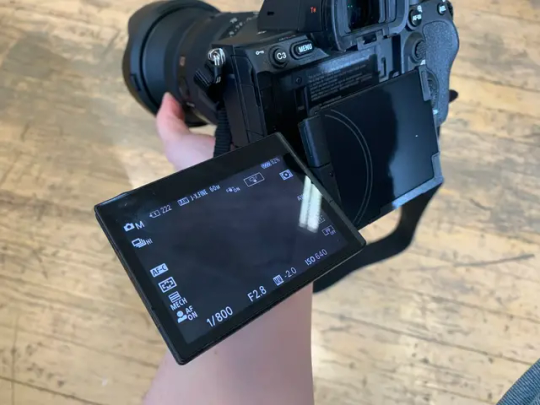
Early Verdict
Power up!Speed up!Everything more!The Sony A7R V resembles a Top Gear-esque episode.However, despite Sony's claim that this camera is an expert in resolution, it blurs all video and sports boundaries and makes it more difficult than ever to select the "right" Sony camera.The A7R V is a remarkable technological accomplishment; however, does it appear to be moving in the right direction—or in any particular direction at all?
Pros
- +8K video, though cropped
- +Massively increased buffer depth
- +Revolutionary AI focusing
- +Vari-angle rear screen
- +Improved IBIS
Cons
- -Stays at 61MP
- -Heavy reliance on custom buttons
- -Video limitations
The Sony A7R V is Sony's "resolution" specialist, but its 8K video capability, significantly increased burst capacity, and brand-new AI autofocus will undoubtedly split the sports/action and possibly video markets.
The Sony line will remain as perplexing despite this.Although the resolution of the Sony A7R V surpasses that of the Sony A1 (opens in new tab), the Sony A9 II (opens in new tab) maintains its position as the sports specialist despite being beaten for speed by the A1 and for autofocus technologies by the A7R V.Although its 12MP sensor effectively excludes it from stills photography, the Sony A7S III (opens in new tab) is still the low-light video specialist. On the other hand, the Sony A7 IV (opens in new tab) is less expensive than the A7R V and may be better for hybrid stills/video work.
The Sony A7R V is plainly one of the most mind-blowing Sony cameras(opens in new tab), also of the best cameras for professionals(opens in new tab) and, surprisingly, one of the most mind-blowing cameras for sport(opens in new tab) - however Sony is by all accounts pointing more at the untamed life/nature/wedding market.
Sony's habit of cramming more power into each new camera and simultaneously pushing the limits in all directions is great for headlines, but it could be confusing to buyers.
However, let's return to the Sony A7R and forego the rest.
SPECIFICATIONS

Sony A7R V
Sensor: 61MP back-illuminated APS-C Exmor R CMOS
Image processor: BIONZ XR + AI unit
Mount: Sony FE
ISO range: 100-32,000
Shutter speeds: 1/8000-30sec
Image stabilization: 5-axis IBIS, Active mode, up to 8 stops
Max image size: 9,504 × 6336 pixels
Max video resolution: 8K 24p
Continuous shooting: 10fps
Viewfinder: 9,444k dot EVF, 0.9x magnification
LCD: Tilting/vari-angle touchscreen, 3.1-inch, 2,095k dot
Memory: 2x SD UHS-II/CFexpress Type A
Size: 131.3 x 96.9 x 82.4 mm( 5 1/4 x 3 7/8 x 3 1/4 inches)
Weight: 723 g (approx. 1 lb 9.6 oz)
KEY FEATURES
For full-frame cameras, this one has the highest resolution sensor available.The Leica M11 and Sigma fp L are close competitors, but no other camera in this size has more megapixels.Even with Sony's improved 240MP Pixel Shift Multi Shooting mode and 61MP, some may have hoped for more from Sony's resolution specialist.
Sony's new AI-powered AF system, driven by its own bespoke AI processing unit, is the bigger news.As a result, the camera is now able to recognize and follow a wider variety of subjects, including cars, trains, airplanes, and insects.In addition to eye detection, the A7R V now recognizes animal and bird heads and bodies, and perhaps most importantly, it can now recognize human subjects by their shapes, limbs, and poses rather than just their faces.
This sounds more like something for sports cameras, but wedding/event and wildlife photographers can easily benefit from improved subject and person recognition with this camera.The A7R V can capture up to 8 times more raw files in a burst than its predecessor thanks to its massively increased burst depth. This, in conjunction with the AI AF, is sure to attract sports shooters as well.
The 8K video is mentioned last because it may not be the A7R V's strongest feature.It has a 1.2x crop and a maximum frame rate of 24p.Full-width video can only be captured at 4K, and whether or not this is oversampled is still unclear. If you want 4K 60p, you have to use the 1.2x crop of 8K video.Despite its spellbinding "8K" headline, the A7R V does not appear to be a video specialist.
BUILD AND HANDLING
Just like the A7R IV before it, the new multi-pivot screen doesn't make the A7R V feel any thicker. Instead, it feels like a thick, sturdy camera with a good grip.Even though the EV compensation dial on the older model has been replaced with an unlabeled multi-function dial, the two cameras actually share a lot of similarities.
The bodies of Sony's A7 cameras all have a relatively low height.Unless you move your grip upwards and keep your index finger hovering on or near the shutter release in a shooting position, you can only ever get three fingers around the grip, leaving your smallest finger dangling under the baseplate.
Despite the fact that it appears that there would be room for one if the mode dial were moved to the left side, Sony has not yet selected a status LCD that is mounted on top.However, despite the fact that Sony's cameras' internal technologies are improved with each subsequent release, their exteriors remain largely unchanged.
However, the rear screen functions flawlessly.Although the vari-angle pivot is welcome, the screen can still be tilted to remain on the optical axis of the lens.Excellent is the EVF, which has the highest resolution currently available.
Like other Sony cameras, the A7R V uses a lot of custom buttons instead of physical controls that are tailored to each camera's strengths.So there is still a conventional mode dial on the top plate, complete with a green "auto" button?on a high-end professional camera?).While the presence of a lever for stills, movie, and S&Q modes is welcome, why not include continuous mode as well?It is one of this camera's selling focuses, all things considered.
The movie record button is located just behind the shutter release on the camera's top.It doesn't look like you can reach it with your index finger unless you shift your grip.On the side, there are ports for headphones and mics, and there is full-size HDMI underneath the flap.However, Super35 crop mode is the best way to get the highest-quality oversampled 4K video.This A7R, like previous models, appears to be designed to shoot video when needed, but not specifically for video.
PERFORMANCE

Sony A7R V
Having previously used the A7R IV, we would have expected the same level of quality and resolution from our sample images.We did not have the camera long enough to test its improved image stabilization or its video features.When we receive a review sample, we are also eager to test the continuous shooting buffer capacity.
However, we did test the AI autofocus on a variety of subjects.Even people in the middle distance with their backs to you can be picked up by the human AI, which is very good at recognizing human shapes in the frame.Although we were able to track a black and white dog better than a golden retriever, additional testing may have been required, the animal detection was also impressive.
Even with its regular tracking AF and not the bird detection mode, the A7R V was excellent at tracking wheeling gulls against a blue sky.Notwithstanding, it appeared to battle with a crow pecking at the ground - as a matter of fact the AF quit working two or multiple times subsequent to surrendering, then returned when.The camera was turned off, then turned back on.Very odd.
However, subject recognition isn't always easy to use.In our tests, we were taking pictures of people and places at a motocross competition. At times, we wanted to focus on, say, a motorcycle rather than someone standing nearby.Presumably you can tweak a button to turn the human acknowledgment on and off, yet while you're capturing a blend of subjects like this, it may very well disrupt everything.
The issue with artificial intelligence is that it may appear as though two people are working the camera instead of just one.
EARLY VERDICT
Technically overwhelming, physically underwhelming – that’s how the A7R V feels. The camera body feels too small – or not tall enough in the body – for the big pro lenses you’ll be using with it, and the controls follow a generic layout rather than being adapted to this camera’s strengths. You can customise the buttons endlessly to suit the way you work, but that takes time and also a good memory for which button you’ve customized to do what.
Technically, the A7R V is stunning. The new AI subject recognition AF is remarkable, both for its rapid identification and acquisition and its very sticky ‘tracking’. The image quality is every bit as good as that of the A7R IV before it (Sony says it’s better), and the bigger buffer makes the A7R V much more effective for prolonged burst shooting.
Read more :
Mad paris gives farfetch beat life to outdated contax T2 Cameras
Check Amazon : https://amzn.to/3gEwjpx
Read the full article
0 notes
Text
Panasonic GX85 Thoughts After Five Months

PROS:
Much like the GX7, it’s a small and light system. This one kicks it up a notch from that camera with a thinner grip and less of a protrusion for the EVF (while sacrificing the tilting action from the GX7).
The shutter is much quitter. The GX7 was one of the loudest cameras I owned, which always felt odd since it focused so silently and it was so small.
It was cheap. I thought the GX7 was cheap when I got it, but this ended up being a little cheaper when I got it from eBay. The only “issue” is that I also got duplicates of the two lenses I picked up with the GX7.
The autofocus seems a bit better than the GX7, and it focuses surprisingly well in low-light.
The IBIS is pretty damn good. It seems comparable to my Ricoh GR and slightly better than my A7C, although it’s stabilizing a much smaller sensor than those two cameras.
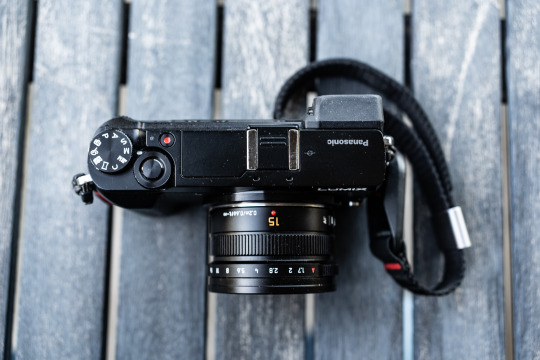
CONS:
While it’s better than the GX7 in a lot of ways, it’s also worse in a few. The shutter is quieter but it maxes out at 1/4000 compared to 1/8000. It also has a worse flash sync speed, which I guess isn’t a huge deal now since I have the GR with its leaf shutter in case I want to do some strobist stuff.
Battery life isn’t great. It takes the same batteries as the GX7 so I already had a few, but you definitely need three or four if you want a whole day of shooting. Looking at DPReview it’s actually rated for only 290 shots compared to the GX7’s 320.
The sensor is pretty much the same sans the AA filter. High ISO performance isn’t the best and it also can struggle with blown highlights.
It still has that issue that the GX7 has where dialing in focal lengths for IBIS doesn’t have enough options. I have a manual focus 25mm and for whatever reason that’s not an option to input on here.
(All sample photos edited in Lightroom Classic, some with additional adjustments from DxO PureRAW 2.)

Panasonic Lumix 25mm f/1.7. f/1.7, 1/320, ISO 800 [Edited in Lightroom Classic.]
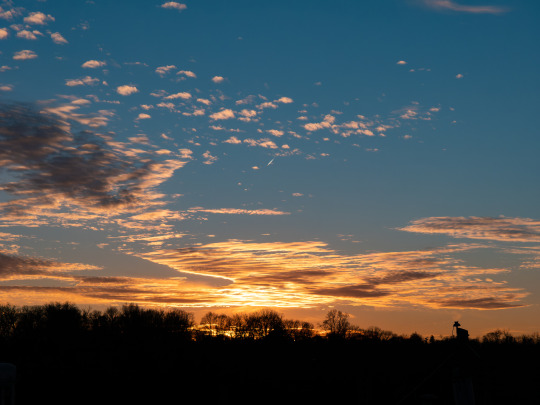
Panasonic Lumix 45-150mm f/4-5.6 at 45mm. f/8, 1/1600, ISO 640. [Edited in Lightroom Classic and DXO PureRAW 2]
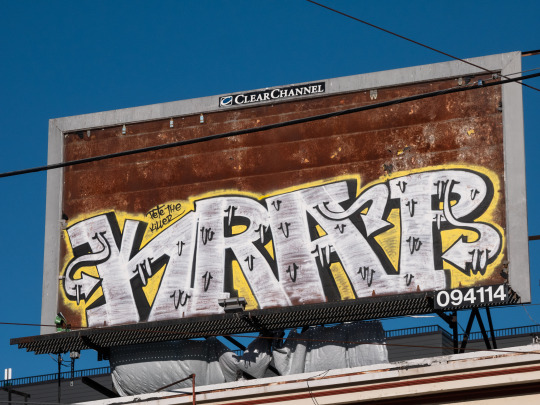
Panasonic Lumix 45-150mm f/4-5.6 at 65mm. f/8, 1/2000, ISO 400 [Edited in Lightroom Classic.]
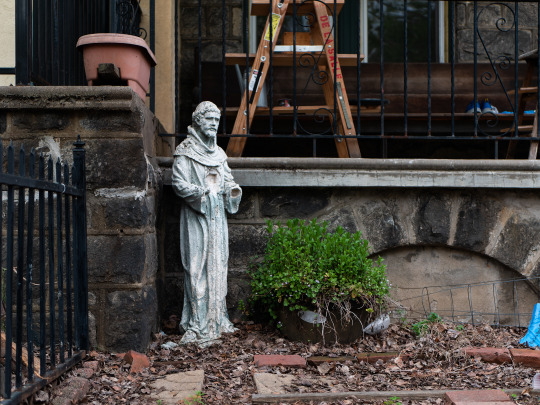
Panasonic Lumix 25mm f/1.7. f/2, 1/250, ISO 320. [Edited in Lightroom Classic and DXO PureRAW 2.]
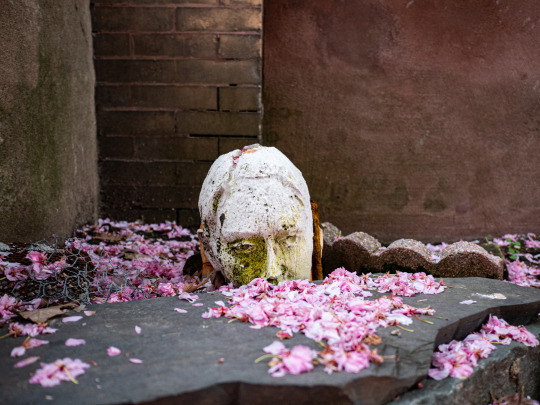
Panasonic Leica 15mm f/1.7. f/2, 1/50, ISO 640. [Edited in Lightroom Classic.]
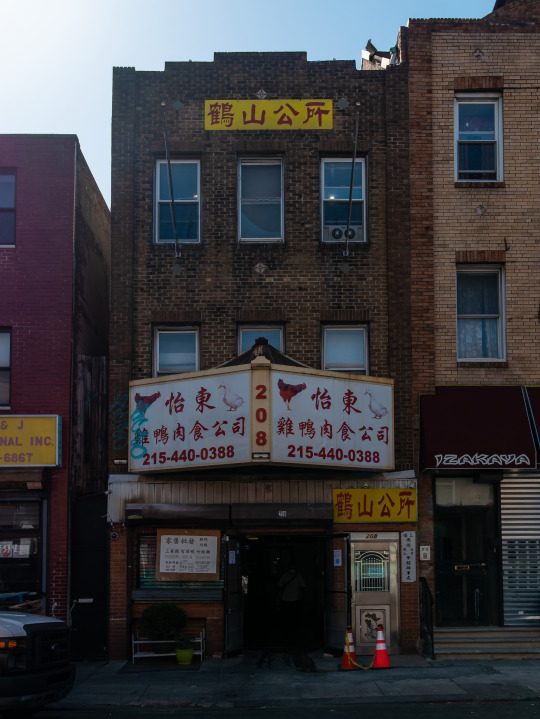
Panasonic Lumix G Vario 12-32 f/3.5-5.6. [Edited in Lightroom Classic and DXO PureRAW 2.]

Panasonic Lumix G Vario 12-32 f/3.5-5.6. [Edited in Lightroom Classic.]
32 notes
·
View notes
Link
Right, here are the best cameras for bloggers for 2020!
Let me speak from my experience here. Finding the right camera for your blogging & vlogging needs can take a lot of time and even more money. That’s the horrible bit out the way.
When I upgraded from my Canon 6D to my Sony A7riii, I knew I wanted to switch from a DSLR to a mirrorless camera, I just didn’t know which one. It must’ve taken me at least 6 months to actually make a decision, and even then I wasn’t sure it was the right one.
To make your life a lot easier and to save your time and effort, I’ve put together the best cameras for blogging right now. Whether you’re a beauty blogger, a fashion blogger, a food blogger, or a travel blogger, I’d really recommend one of these cameras to take your photos and videos to the next level.
Unlike a boring tech or camera website, I speak from personal experience. I only recommend the best vlogging cameras, the ones that I know you’ll need. As I do this day in day out, I feel like I know what I’m talking about!
Mirrorless cameras are the best for serious vlogging. They have more powerful video features, combined with the versatility of interchangeable lenses — which gives you the ability to change your focal length, as well as complete control over creative aspects like depth of field. We don’t rule out DSLRs (especially the recent Canon EOS Rebel SL3 / Canon EOS 250D), but for now, mirrorless cameras definitely have the lead for vlogging.
Here I have some awesome camera for you, have a look :
1. Sony A6400
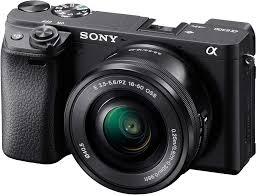
Brilliant for vloggers, the A6400 has 4K video and a front-facing screen
Type: Mirrorless | Sensor: APS-C | Megapixels: 24.2MP | Lens mount: Sony E | Screen: 3-inch tilting touchscreen, 921,000 dots | Viewfinder: Electronic | Continuous shooting speed: 11fps | Max video resolution: 4K
- Image quality and resolution
- 4K video performance
- Sophisticated autofocus
- Design feels dated
2. Panasonic Lumix G100

Panasonic’s new vlogging camera is pretty good at stills too
Type: Mirrorless | Sensor: Micro Four Thirds | Megapixels: 20.3 | Lens mount: MFT | Screen: 3-inch vari-angle, 1,840k dots | Viewfinder: EVF, 3.69m dots | Max continuous shooting speed: 10fps | Max video resolution: 4K UHD | User level: Beginner/enthusiast
- Quality video and stills
- Audio-recording capabilities
- No in-body stabilization
- No headphone jack or USB-C por
3. Olympus OM-D E-M5 Mark III

With 4K video, flip-out screen, and great stabilization, it’s built for vlogging
Type: Mirrorless | Sensor: Micro Four Thirds | Megapixels: 20.4MP | Lens mount: Micro Four Thirds | Screen type: 3in tilting touchscreen, 1.04million dots | Max video resolution: 4K | User level: Enthusiast
- Rock-solid in-body image stabilization
- Phase detect AF is superb
- No headphone jack
- No 4K 60p option
4. Fujifilm X-T200
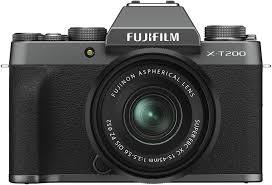
Type: Mirrorless | Sensor: APS-C | Megapixels: 24.2MP | Lens mount: Fujifilm X | Screen: 3in articulating touchscreen, 2,760k dots | Viewfinder: EVF, 2,360k dots | Max continuous shooting speed: 8fps | Max video resolution: 4K | User level: Intermediate
- 4K video upgraded
- Lightweight, ergonomic design
- A little pricey
- Sensor CMOS, not X-Trans
5. Olympus PEN E-PL10

A compact take-anywhere camera perfect for fashion-conscious influencers
Type: Compact-shape CSC | Sensor: Four Thirds | Megapixels: 16.1MP | Screen: 3.0-inch 1,040k tilt touch | Viewfinder: None | Lens: Micro Four Thirds | Continuous shooting speed: 8.6fps | Max video resolution: 4K | User level: Beginner/intermediate
-Stylish, highly compact design
- Intuitive and easy to use
- No viewfinder
- No microphone jack
6. Canon EOS M6 Mark II

Lightweight and versatile, with a massive megapixel count
Type: Compact-shape CSC | Sensor: APS-C | Megapixels: 32.5MP | Screen: 3.0-inch 1,040k tilt touch | Viewfinder: None | Lens: Canon EF-M | Continuous shooting speed: 14fps (30fps 4K) | Max video resolution: 4K | User level: Beginner/intermediate
- Useful tilting touchscreen
- Lightweight and portable
- Relatively few lenses
- No headphone socket
7. Sony ZV-1

Sony has adapted its RX100 design to make a brilliant vlogging camera
Type: Compact | Sensor: 1in | Megapixels: 20.1MP | Lens: 24–70mm f/1.8–2.8 | Screen: 3in vari-angle touchscreen, 921k dots | Max video resolution: 4K | Mic port: Yes | User level: Enthusiast
- Supplied mic windshield
- Super-fast AF
- Vari-angle screen
- The small-ish rear screen and not 16:9
8. Canon PowerShot G7 X Mark III
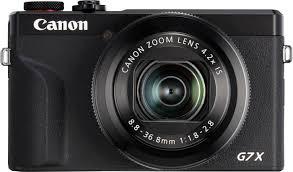
A flip-up screen, large sensor, and a compact body — ideal for vloggers
Type: Compact | Sensor: 1in | Lens: 24–100mm (Equiv.) f/1.8–2.8 | Screen: 3in tilting touchscreen, 1.04million dots | Max video resolution: 4K | Mic port: Yes | User level: Beginner
- 4K video with no crop
- Can Livestream and shoot vertically
- A little pricey
- No viewfinder
- For more details please visits your site:- https://electronicsmonk.com/electronics/camera/vlog-cameras/right-here-are-the-best-cameras-for-bloggers-for-2021/
#electronics#electronics gadgets#cameras#vlogger#video vlog#best cameras#best cameras 2020#etmonks#4k video
1 note
·
View note
Photo

LETS TALK CAMERAS
I remember my first video production class, I was super excited I got to learn some camera features, their functions and basically how to operate a camera. I see why photographers are in love with their craft.
After class I started thinking about how and when I would get my own camera so that I can get to explore more and create beautiful memories. As a newbie, I got confused on how to even begin my search, there are several factors to be considered here ( type of camera, budget, lenses, film size and so on).
After several searches, Thankfully, I found a middle ground between frustratingly limited cameras and the ones that cost more than a semester of classes. So I decided to share :)
Nikon D5600
The Nikon D5600 is a beginner-friendly DSLR that you can pick up on Amazon from €545.48. While you may not find all the bells and whistles of a pricier camera, it still has everything students need to learn photography including manual exposure mode and RAW shooting. The 24-megapixel APS-C crop sensor produces excellent images for the price point.
Sony Cyber-shot RX100 III
The large 1.0-inch sensor delivers excellent levels of detail, with the broad and fast range of the zoom lens making it a versatile travelling companion. This camera can be gotten on Amazon from €444. There's also a built-in pop-up view finder and a tilting screen (though its not touch-sensitive). Take into account the sleek, premium finish and it all adds up to a great compact camera at a great price.
Type: Compact | Sensor: 1-inch, 20.2MP | Lens: 24-70mm f/1.8-2.8 | Screen: 3-inch tilt-angle, 1,229K dots | Viewfinder: EVF | Continuous shooting: 10fps | Movies: 4K | User level: Beginner/intermediate
Nikon's D3400
This camera includes a newly developed APS-C sensor (though still with 24MP) and an even better battery life of 1,550 frames per charge, next to the D3400's very capable 1,200 shots per charge. This camera can be gotten from €372.45 on Amazon.You also get a better grip and a slightly redesigned body that's a bit lighter too. The D3400 is still around and remains an excellent first-time buy.
Canon EOS Rebel SL2 / EOS 200D
If you're on a tight budget and you can still find it, the EOS Rebel T6 (known as the EOS 1300D outside the US) is a fine option if you're just getting started. This camera can be gotten from €488 on Amazon. But we reckon you save you pennies and opt for the newer, slightly pricier but much better EOS Rebel SL2, also known as the EOS 200D. It gives you plenty more room to grow into as you get more confident, with the advantage of a 24MP sensor instead of a 18MP one, a wider ISO range, faster burst shooting, a flip-out LCD touchscreen and Canon's excellent Dual Pixel CMOS AF system for smooth focusing in video and live view. Video specs are stronger and it feels much nicer in the hands.
Type: DSLR | Sensor: APS-C CMOS, 24.2MP | Lens mount: Canon EF-S | Screen: 3-inch vari-angle touchscreen, 1,040,000K dots | Viewfinder: Yes, optical | Continuous shooting: 5fps | Movies: 1080p | User level: Beginner
Sony Alpha A6000
This camera can be gotten from €199 on Amazon. Don’t let the price fool you. The A6000 costs the same as other entry-level DSLR and mirrorless cameras, but it’s an advanced and powerful camera that has only dropped to this price through being on the market since 2014. So it may be old, but most of the specification still looks pretty fresh today. This includes a 24MP sensor, a fast hybrid 179-point autofocus system and continuous shooting at 11 frames per second (fps). Its age shows in other areas, though; it only shoots 1080p Full HD video and not 4K, and the screen isn’t touch sensitive. And while it’s cheap enough, the A6000’s high-end features make it a little advanced for beginners.
I HOPE I HAVE BEEN OF HELP
For more options, please look through the links below
The best travel cameras of 2019
The best digital cameras for 2019
1 note
·
View note
Conversation
me: *searches for APS-C camera that’s powerful (great image quality, fast AF, has EVF, tilt screen, etc) with non-interchangeable lens, but small and light enough to fit into a handbag*
also me: *buys Huawei P30 Pro*
#the camera is great xD#and i need android for my 3rd and 4th number xD#killing two birds with one stone xD#cos the camera i want doesn't exist in this world#so i'm happy with my purchase#also it's 50x zoom yo!#the lens is leica!
2 notes
·
View notes
Text
Not sure how to start this write up. There is some hesitancy on my part, but not for the usual reasons.
Not for fear of Leica adherent backlash. I am a casual member of the same. Very much enjoyed a brief Leica film dalliance I fully understand the Leica allure.
https://flic.kr/p/26omc7J
And I loved what the Leica M3 (KEH Blog Post here) could do.
https://flic.kr/p/YPNiHi
What happened? As much as I loved the M3 functionally it was a dead end fiscally.
Body: I would rather in body metering. But that means a film M6 (M5 also technically) which currently goes for more than a few brand new full-frame digital cameras.
Lens: Had and loved the Voigtlander 50mm f/1.5. But why not a proper Leica? They are quite expensive, especially when you go wider than f/2. Multiples of the cost of the M3 body alone used in fact.
Media: An M mount digital Leica was beyond my reach. The cost of moving to a digital M mount was a hard proposition for me personally.
Sidebar: Not saying digital M mounts are not worth the price. They are. Simply a matter of them costing more than I am willing or able to spend.
What did I do next? I already enjoyed Voigtlander lenses so I went for a less expensive Voigtlander Bessa R2 that has in body metering.
https://flic.kr/p/261676d
Perfect for my purposes for much less spend. So it looks like I dodged the Leica bullet. What happened? Put simply the Q happened.
As soon as it was released back in 2015 I knew the Q would haunt me. Some scoffed at such an expensive all in one camera. Not me. Without knowing anything more the mere fact that this was a camera with:
An AF Summilux lens included where a manual focus M version would cost more alone.
No rangefinder, but zoom and peeking aids like those I grew to appreciate on other mirrorless cameras.
Full frame. As much as I appreciate the Leica name I would not purchase a less than full frame lens Leica product.
I stopped reading further. Knew I was in trouble. A close encounter with a Q in the wild proved problematic as well. On a local photo walk accomplished photographer Edde Burgess took what is still to this day my favorite portrait of me.
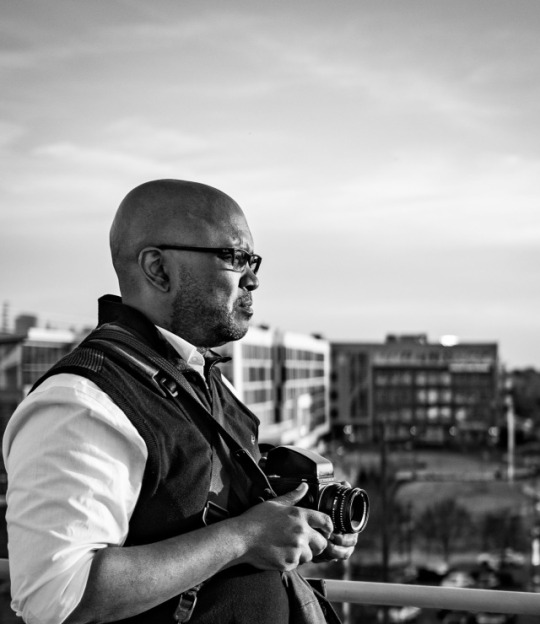
Edde took this with his Leica Q that I tried not to look directly at during the walk for too long. In short, I had a medium format film camera in hand and a bag full of digital gear, while Edde was rolling with one self-contained wonder. Still, I resisted.
Then after some years went by…
A Q showed up at my local camera shop recently.
Dang it.
Took it in hand and told myself not to look at the price on the bottom. I looked. Was initially stunned by, but not really surprised by, the price. Holding its value better than I had hoped.
Went home and looked at the prices of examples online and realized the Q really holds its value. This local example was very much priced to move. If I ever was going to get one this would likely have to be it. Dang it.
Went on to finally read and watch the reviews and deep dive into the specs I had all avoided all of these years. Hope was that these would back me down. Snap me out of it. Sheesh. A rare consensus. Praise after praise. And the specs listed features I did not expect of any all in one camera, especially a Leica.
OIS
Found this particularly surprising. My one real bogey, the RX1, does not have this feature. Digital stabilization does not count. Having long become spoiled with OIS it is now a must-have feature.
Macro
So avoided early reviews and specs that I had no idea that it had a macro function. The party piece is the shifting distance markings. Amazing bit of engineering and design that actually works.
Leaf shutter.
Silent shooting with physical shutter up to 1/2000s and flash sync up to 1/500s. Will not ever likely use flash, but the silent shooting is a definite plus.
E-shutter.
Up to 1/16,000s shutter. What? This means completely silent stills in daylight with the aperture wide open without an ND filter any time I want.
WiFi/NFC.
Well implemented remote control and file transfers by all accounts. I see you Leica.
10fps… 10fps!
3 years old and bests the rightly highly regarded newbie 8 fps A7iii (No ding intended. Love that camera. Just facts.).
AF.
Fast and accurate AF on a full frame Leica. That is a ‘take my money’ sentence.
Direct manual focus.
With assists. WIth hard stops. Focus tab with an ingenious AF/MF switch built in.

Not drive by wire. With zoom and peeking. No. it is not a proper rangefinder, but it more than makes up for it with it’s well thought out and elegant implementation.
Face detect AF.
Another ‘take my money’ feature.
Touch screen with touch focus.
Greatly helps to mitigate the omission of a tilt screen for me.
AF Tracking.
Actually works.
Favorites menu.
Most recent firmware I installed added a favorites menu where you can choose what comes up first. Found the menus already to be intuitive and quick to navigate, but this is even better.
User profiles.
Quickly switch between my favorite self defined configurations (B&W/High Speed/Street/Normal) just like I have set on all of my other cameras.
Video.
Not pro grade. No mic jack. Not 4K. But AF tracking is good and more than serviceable for the few occasions I would want to capture video.
Decided a test drive was in order. Does it add up? Have been disappointed in the past when real life experience does not match the hype and/or spec sheet. Not the case here.
Lower price non Leica comparisons.
Having owned and tried many digital cameras (Sony RX1 line, Fuji X100 line, Ricoh GR line and the like) I can honestly say that this camera is greater than the sum of its parts. It is not about capability since any number of cameras can produce excellent images. But even if you took the word Summilux out of the equation this camera matched or bested every camera listed above ergonomically in my book. I spent near no time staring at the camera wondering how to change setting X or Y. Switch to MF? Move the focus wheel on the lens away from AF. Change the aperture manually? Move the dial on the lens off of A. Change the shutter speed manually? Move top plate mounted shutter dial off of A. Change the ISO? Press button on the back marked ISO and turn the wheel. Hey, what is this unmarked dial on the top do? What do you know it adjusts the exposure compensation. All this in the first few moments after having picked up the camera without ever picking up a manual or visiting Youtube. Your mileage may vary, but add the Summilux name back in on top of that (and my notes below) and it is a no brainer for me.
Higher price Leica comparisons.
Leica M acolytes look away until the next paragraph. Nothing to see here… Seems absurd to say, but at the Qs price point there is value to be had here. To achieve the equivalent Leica M specs of this lens and body combination one would need to spend many thousands more for a digital 24MP M 240 body (new or used) or Summilux lens (any focal length used or 28mm new). And I did say ‘or’ not ‘and’. Combine the two and you easily surpass what I paid for my dadmobile daily driver on up into five digits. Some would say that an M advantage is that you can change the lens. Moot point for me. Truth is that if I ever did buy a comparable M lens and body there would be no budget left ever for another lens. And no AF at that price. Tell me of a less expensive AF true Summilux full frame experience anywhere and I am all ears. Not arguing worth. Stating what I am personally willing to pay.
But both comparisons ultimately miss the point. To say the most cliched of cliched things you have to use it and evaluate the results for it to make sense. Hard to relay in words, but since we are here let me try. Imagine if you combine:
Summilux.
I.E. outstanding sharpness wide open, class leading sharpness stopped down a little, great focus fall off, great contrast, creamy bokeh, and wonderful colors. Best lens I own hands down is permafused to this camera.
Near DSLR speed swift and accurate AF acquisition.
Even in low light. How they did this with contrast detect AF only I have no idea. Some Panasonic partner magic perhaps?
10fps.
With useable AF-C tracking in a pinch. That bests all of my other quite capable interchangeable lens cameras.
Best of the best mirrorless manual focus implementation.
Utterly silent shooting.
Best of any digital I own 1/16,000s shutter speed available.
Not to be used for panning/fast moving objects or it will distort, but fantastic in relatively static brightly lit conditions. 1/2000s leaf shutter available if need be for motion.
24.2MP.
This the goldilocks MP count for me. Any less is not enough of a post crop detail safety net for my liking. Any more eats into archive RAW archival storage space quickly and noticeably impacts the speed of my post processing workflow.
Full frame.
Some of my favorite work ever was done in MFT. APS-C is just fine for most all purposes. But if available I prefer full frame.
OIS.
Mentioned above, but deserves mentioning again.
Time lapse, panorama and other scene modes.
Have not gotten around to using any of this yet. But glad it has them.
Macro.
Mentioning again, because this is not just macro writ large on a non macro lens, but actual fast AF wonderfully implemented real deal macro capabilities.
EVF.
Best EVF I have ever used. And I have used a lot of EVFs.
In body 35mm and 50mm field of view crop.
May seem silly since you can crop after the fact. Made more useful since the images are so sharp that cropping still leaves plenty of detail.
Great for sharing real time with the Leica app. Crop while you shoot instead of after the fact.
If you shoot RAW and JPEG like I do it is the best of both worlds since RAW files are not cropped.
Monochrome JPEGs.
There are other JPEG settings, but this is the only one that matters to me.
Small.
No, not as small as the also full frame RX1 line, but tried it and that camera is too small for my beef mitts. Bought and sold two RX100 cameras for the same reason. For me there is such a thing as too small. A nice size with half case and hood, but remove both and I am able to get this camera into a jacket pocket. Plus more compact than a similar M set up. And far more compact than a similarly spec’d A7III and lens. I believe this may be the most compact brighter than f/2 full frame digital camera and body combination on the market currently.
Summilux, summilux, and in conclusion summilux.
But not so fast. There have to be minuses, right?
Focal length.
This was one potential demerit that concerned me. As I have pointed out ad nauseam my usual go-to prime focal length is 50mm or thereabouts. But in use, the 28mm focal length has not proved to be an issue at all. It has forced me to move in to get the shot sometimes, but this is where the small, silent, and quick nature of this camera pays dividends. So far I have thoroughly enjoyed taking shots while in the fray rather than having to back up and away. Has proven handy with environmental candid shots also. And if I do need to step back the bright aperture, ample MPs, accurate focus, and very sharp lens means that cropping is no issue. I should not have been surprised since two of my favorite all in one film cameras are 28mm.
Lack of weatherproofing.
Would have been nice. But not really an issue for me. Some of my cameras are weatherproofed technically and they all get put away at the first sign of rain regardless.
Saved the most biased, eye roll/cringe inducing, subjective assessment for last.
Fun.
Fun to use. Fun to review the results. A highly technical and very capable contraption that is simple to use for any situation that does not require a superwide or telephoto lens. I have cameras that have high keeper rates. The Q is the rare camera that has a high “wow factor” rate. And the only one I own film or digital with that “wow factor’ that does not have some usability compromise involved.
So much so that I have gone from carrying a gear bag everywhere to just carrying this camera. In fact I have already traded quite a bit of the gear the Q displaces without hesitation to partially fund this acquisition.
But lastly it has been out so long you might mention. True. But I know of no camera released since that tops this camera. Some mentioned a Leica Q 2 one day, but why? In my humble opinion there is little that would improve this camera.
So in case you were still wondering I like it. A lot.
Here are some sample shots below and here is a link to an ongoing gallery.
Happy shooting.
-ELW
The Leica Q 4 years on: An amazing camera still. @leica_camera #leicaq #leica #leicaqtype116 Not sure how to start this write up. There is some hesitancy on my part, but not for the usual reasons.
1 note
·
View note
Text




Nikon Z5 is an excellent Full-Frame Camera for all Photographers. Available in many lens options @jjmehta
Call or Whatsapp 9833771200
Nikon Z5 w/ Nikkor Z 24-50mm
Nikon Z5 w/ Nikkor Z 24-70mm
Nikon Z5 w/ Nikkor Z 24-200mm
Nikon Z5 w/ Nikkor Z 24-120mm
Top Features Include :
24.3 MP sensor
5-axis image stabilization
Hybrid AF system with 273 focus points
Eye detection AF compatible with animals
4.5 frames/sec
4k video
ISO: 100-51,200
369,000 dot EVF
3.2 inch 1.1 million dot touch panel tilt LCD
Dustproof and weatherproof
Dual SD card slot
Nikon EN-EL15C battery
#nikon#z5#nikonz5#nikonphotography#picoftheday#landscape#birds#wildlife#photoshoot#fotografia#portraitphotography#sunset#streetphotography#travelphotography#wildlifephotography#blackandwhite#indiaphotography#camerastore#camerashop#camera
1 note
·
View note
Photo

The Leica M11 is a digital rangefinder camera built around a 60MP BSI CMOS sensor. It's the latest in Leica's 'M' series of rangefinders that dates back to the M3 from 1954. With this unrivaled depth of heritage behind it, it's no surprise that the M11 looks a lot like its predecessors. Despite the visual similarities, there's a lot that's changed in the latest model, with a more refined body design as well as completely new internals. Key Specifications; 60MP BSI CMOS sensor with dual gain design Multi-field (matrix) light metering ISO 64 - 50,000 Three Raw resolution options (60MP, 36MP, 18MP) SD card accessible from battery compartment (no removable base plate) 64Gb of internal memory Exposures up to 1 hour, e-shutter down to 1/16,000 sec Live view stabilization (digital shake correction of preview image) Compatible with Visoflex II 3.68M-dot tilting accessory EVF The M11 will be available in two forms: a classic silver version with black leatherette band around the center and a brass top-plate, and a black version that uses aluminum instead, making it around 100g lighter. The recommended retail price for both colors is $8995. https://www.instagram.com/p/CYrj0Aej1c-/?utm_medium=tumblr
0 notes
Text
Panasonic Lumix GX7 Thoughts After 10 Days

PROS:
It's a small and light system. While the body isn't that much smaller than other interchangeable lens cameras I've owned like the Sony A6500, the compact lenses make a huge difference. I can fit the body, two lenses that cover 24mm-300mm, a 50mm equivalent prime, and have room to spare in my smallest camera bag.
The autofocus seems reasonably quick and pretty ok at things that don't involve tracking.
It's very usable for not having a joystick. Although it's a 2013 camera it's touch screen interface is much better than my much newer A7III (to say nothing of the 2015 A7RII that didn't even have a touch screen). Aside from just being able to change the focus point with the touch screen you can also use it to navigate the menus (neither the Sony nor my Fuji can do that) as well as swipe through photos and pinch to zoom (my Fuji can also, my Sony cannot).
It also has built in wifi and a very usable camera app; another nice surprise for such an old body. Sending photos from the camera to my phone is a lot more reliable with Panasonic's app than Fuji's.
The flash sync speed is 1/320, which is the highest in any camera I've owned that didn't use a leaf shutter.
Focus peaking works really well on this. Maybe because of the smaller sensor and deeper depth of field, but it's nice to just see what's in focus quickly and know you got it without having to double check.
It was cheap! I was thinking about getting a zoom lens like the Sigma 100-400 or a compact zoom camera like a Sony RX100VII for a while now because I've been enjoying using my 24-105 but wanted a little more reach for some things. This camera with the 45-150 (90-300mm equivalent) solves that issue for less than half the price of any other option I considered.
It's stylish! While not quite up to the X100V, the two tone black and silver look is still dope on this body.
It has a tilting EVF. It's weird because it also has a tilt screen but I guess it could be useful in some scenarios I dunno.

CONS:
Small and old sensor means that high ISO performance is a bit on the rough side. It's somewhere between modern APS-C sensors and modern 1" sensors and it performs closer to the former than the later. That said, it's usable if you're careful with it and don't try to shoot it like it's a full frame camera.
The eye sensor can sometimes get tricked into turning the EVF on and the screen off when you're shooting waist-level. I like my more modern cameras that can tell when you have the tilt screen tilted. That said, there's a button right next to the EVF that switches it instantly when it does screw up and the EVF can't til up so it won't screw up.
It has a built in stabilization, but I don't think it's quite as good as my Sony's. An even more minor quibble: it lets you dial in focal lengths for adapted lenses or manual focus glass, but the one manual focus lens I got is 25mm and there's no setting for that (which is weird considering 25mm is a standard nifty fifty in this format). Something is better than nothing I guess.
No usb charging. That wasn't really a common thing in 2013, but it still kinda stinks.
Poor(ish) battery life. Thankfully the batteries are small and cheap enough that this isn't a huge deal.
Unless you're shooting in manual you don't get a proper preview of the exposure (ie it looks well lit even if you have exposure comp dialed in to the extremes). I've taken to just shooting in manual to avoid this issue. It’s a real head scratcher, tho.
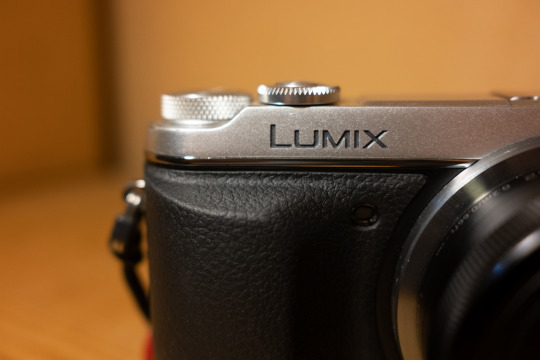
Overall this camera is pleasantly surprising considering it’s age and price. I paid $270 for it with the kit lens but used body-only setups can be even cheaper. Of course if you’re in the market for one of these and you plan to use it as your only camera, the newer Panasonic GX85 has better autofocus and stabilization for only $600 with the 12-32 and 45-150. I saved about $260 getting a used older model with the same lenses but for some people buying new might be a better move.
The two Panasonic lenses seem decently sharp, but the size is the real draw for both. The 12-32 collapses in on itself to the height of maybe two Oreos so the footprint of the GX7 with that attached is absolutely tiny. The 45-150, while considerably larger, is still very small for what it is. The barrel extends as you zoom but even pushed out all the way it’s still smaller than a can of PBR. I also got the 7Artisans 25mm f/1.8 which is an absolutely fantastic lens for the $70 they cost new. While it’s not going to impress many people in terms of corner to corner sharpness, it’s sharp enough in the middle and focuses ridiculously close to your subjects. It’s also a fair small lens and sits in the middle of the other two in length and weight.
I guess the elephant in the room for people considering cameras like this is the state of micro four thirds as a system. Olympus recently sold their camera business to a company called JIP that isn’t known for doing big things with the brands they inherit (they turned Sony VAIO computers into a junk brand basically). Panasonic is the other big name in M43rds and it seems like their focus has been on their full frame cameras as of late since they’re more profitable in a declining market. While this isn’t great news for the long term if you’re picking it as your primary system, for people already invested in other systems that want something cheap and small with a nice selection of lenses, it can be really appealing.
My plan is to stick to buying several year old used stuff for any of my micro four thirds purchases, but I think I’m set for the time being with the three lenses I currently own.
SAMPLE PHOTOS:

7Artisans 25mm f/1.8 | 1/160 sec, ISO 1600

7Artisans 25mm f/1.8 | 1/125 sec, ISO 1600

Panasonic LUMIX G VARIO 45-150mm f/4-f/5.6 @ 45mm | 1/2000 sec, ISO 400, f/7.1

Panasonic 12-32mm ƒ/3.5-5.6 ASPH MEGA O.I.S. Lumix G Vario @ 15mm | 1/250 sec, ISO 400, f/3.7

Panasonic 12-32mm ƒ/3.5-5.6 ASPH MEGA O.I.S. Lumix G Vario @ 17mm | 1/160 sec, ISO 400, f/4.1

Panasonic LUMIX G VARIO 45-150mm f/4-f/5.6 @ 93mm | 1/2500 sec, ISO 200, f/5.4

Panasonic LUMIX G VARIO 45-150mm f/4-f/5.6 @ 45mm | 1/80 sec, ISO 200, f/5.6

Panasonic LUMIX G VARIO 45-150mm f/4-f/5.6 @ 53mm | 1/320 sec, ISO 200, f/5.6
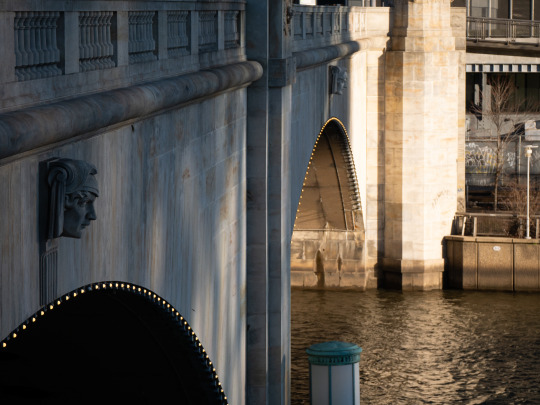
Panasonic LUMIX G VARIO 45-150mm f/4-f/5.6 @ 80mm | 1/1250 sec, ISO 400, f/5.1

Panasonic LUMIX G VARIO 45-150mm f/4-f/5.6 @ 45mm | 1/500 sec, ISO 200, f/5.6
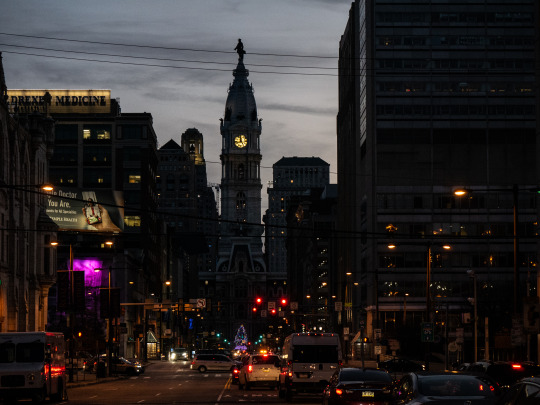
Panasonic LUMIX G VARIO 45-150mm f/4-f/5.6 @ 45mm | 1/125 sec, ISO 1250, f/5.6
14 notes
·
View notes
Text
All about Nikon Z 6 Mirrorless Digital Camera
Part of Nikon's next step in their imaging journey, the Nikon Z6 Mirrorless Camera is positioned as the "all-arounder" within the new Z System. Beginning with the Z Mount itself, a large-diameter design with a short 16mm flange distance allows Nikon to create compact, yet powerful cameras and develop more advanced optics. The Z6 is among the first in the series, and features a high-performing FX-format 24.5MP BSI CMOS sensor and the EXPEED 6 Image Processing Engine delivering outstanding image quality and speed with a native sensitivity range of ISO 100-51200.
On the sensor you will find an advanced phase-detect autofocus system using 273 points covering 90% of the image area, and the sensor features 5-axis Vibration Reduction technology for stabilized photos and video regardless of the lens used. This advanced hybrid AF system will also benefit video. The Z6 features UHD 4K recording at up to 30p and can use the N-Log gamma profile along with the camera's 10-bit HDMI output to create cinema-quality video.
As with many mirrorless systems, the Z Series boasts a much more compact form factor than its DSLR counterparts. The Z6 is no exception with its slimmed down design and lighter build, though it maintains the weather sealing and ergonomics for which Nikon is known. The camera features multiple displays and screens for ease of use, including a 0.80x 3.6m-dot EVF with NIKKOR optics and a Fluorine coating, ensuring clear viewing. The rear of the camera is equipped with a 3.2" 2.1m-dot tilting touchscreen LCD while the top offers a dot-matrix OLED for quickly checking settings. For storage, the Z6 has a single XQD card slot that is compatible with CFexpress for faster speeds in the future. Additionally, the body is equipped with both Wi-Fi and Bluetooth.
Nikon Z System
Introducing the Z mount, Nikon's full-frame mirrorless system promises to deliver class-leading image quality and optics in a compact form factor. The Z mount itself makes much of this possible with a 17% larger inner diameter than the F mount, enabling the use of more advanced optics and lens designs, including ultra-fast f/0.95 options. For minimizing camera and lens size, the Z mount features a 65% shorter flange distance, measuring just 16mm, which allows for dramatically slimmed down body designs. The larger mount also supports faster and larger-volume communications between the body and lens to improve overall performance throughout the system.
24.5MP FX-Format BSI CMOS Sensor and EXPEED 6 Processor
A 24.5MP BSI CMOS sensor is used for all-around shooting, impressive low-light quality, and fast readout speeds to benefit continuous shooting, movies, and time-lapse recording. The back-illuminated design of the sensor affords noticeably cleaner high-sensitivity output for reduced noise when working at high ISO values, up to a native ISO 51200, as well as vivid and smooth quality at sensitivities as low as ISO 100. Benefitting the sensor is the apt EXPEED 6 image processor, which affords a wealth of speed throughout the camera system, including the ability to shoot continuously at 12 fps in raw.
4K UHD Video Recording
Utilizing the sensor and processor attributes for more than just still imagery, the Z6 is also a more-than-capable multimedia camera. Video recording is possible at UHD 4K (3840 x 2160) using either the full-frame area or a DX crop area in 30p, 25, or 24p frame rates. Full HD 1080p video recording is also supported at up to 120p for slow motion playback, and video files can be saved to the in-camera memory cards or as an uncompressed file to an optional external recorder via HDMI out.
Advanced video functionalities have been added with the Z6. This includes the N-Log gamma for capturing flat-looking footage that maximizes dynamic range. Other additions are the ability to output high-quality 10-bit data over HDMI and an Electronic VR function for smooth handheld shooting. Focus Peaking can be used to benefit manual focus control and a Zebra Stripes option is also available to help detect over-exposed areas within the frame. Audio recording can be handled using the built-in stereo microphone or an optional external mic can be added via the 3.5mm stereo jack for greater control over quality, and live monitoring is possible via the headphone jack.
273-Point Phase-Detect AF System
Located on the sensor is an array of 273 phase-detect autofocus points covering 90% of the image area both vertically and horizontally. This provides fast and accurate focusing for both stills and video and with a wide coverage area, subject tracking will work out to near the edges of the frame. Hybrid AF is available for video, which will automatically switch between phase- and contrast-detect systems to provide smooth focus during shooting. Additionally, the latest NIKKOR Z lenses are optimized for silent operation.
Body Design
Built-in to the body is a 5-axis sensor-shift Vibration Reduction mechanism for up to 5 stops of stabilization regardless of the lens used. This system also works with adapted lenses when using the optional FTZ Adapter where 3-axis stabilization is used.
A large 3.2" 2.1m-dot LCD screen is available for bright, clear, and vivid image playback and live view shooting. The screen has a tilting design to benefit working from both high and low angles, and it is also a touchscreen for more intuitive operation, navigation, and settings control.
A 3.6m-dot electronic finder is present for comfortable eye-level viewing. It has a high 0.80x magnification and uses NIKKOR optics to guarantee a sharp, clear image. The finder also has a Fluorine coating for easier cleaning.
The top panel of the Z6 is configured with a dot-matrix OLED. This low-energy display provides quick access to important camera settings.
Configured with one XQD memory card slot, the camera will be able to quickly save images. The slot is compatible with CFexpress, enabling support for future media.
A robust magnesium-alloy chassis is both dust- and weather-resistant to benefit working in harsh climates and inclement conditions.
The ergonomic grip and overall form factor is shaped to benefit handling for extended periods of time and is further accentuated by an anti-slip material and a joystick for seamless settings and focus point selection.
Built-in SnapBridge connectivity to enable seamless transfer of low-resolution imagery as well as remote shooting capabilities. BLE (Bluetooth Low Energy) and Wi-Fi enables communication between the camera and a smart device and, additionally, the mobile device can remotely trigger the shutter and display a live view image from the camera to enable working from a distance.
Included EN-EL15b rechargeable lithium-ion battery provides approximately 310 shots per charge, and in-camera charging is supported. This camera is also compatible with EN-EL15 and EN-EL15a batteries, however do not support in-camera charging.
0 notes
Text
the Sony a7ii is... very different from the X-E2. With the X-E2 I felt like I could just rely on the .jpegs, and maybe tweek something if I had to, but learning with the a7ii is such a steep curve.
Lens-wise though, I'm also getting used to the Samyang 35mm f/2.8. It's a feather-light FF 35mm lens I was put onto by Sean Tucker, and it seems like the smallest lens for the system with autofocus right now.




Some things which are massively better for me: Full frame low light performance, and IBIS. Dynamic range is also pretty insane. The camera also feels good in the hand, which is no surprise considering I was going from something shaped like a Klondike bar to something shaped like a DSLR.

Some things I don't like though: 1. Peaking is far poorer than the X-E2. It only picks up on areas of sharp contrast, and while the X-E2 probably did the same thing, I felt like the X-E2 was much better at it, to a point where I felt like it was picking up on detail definition, rather than strict tonal contrast.
2. The EVF sensor is soooo sensitive, and Sony won't let me map it to a function key. Even when the screen is tilted, if I touch the screen it thinks I'm using the EVF.
3. No silent shooting. It's younger brother the A7 had it, it's twins the A7Rii and A7Sii have it, and every camera I know of after had it. There's no reason why it shouldn't have it. Upon not finding it in the menu, I did some googling, and the consensus is the same, that Sony did this to protect Rii and Sii sales. Hopefully, now that the cameras are a few generations old, Sony can bring out a firmware update that allows for this as well as allowing for mapping the EVF setting.

For me, it sort of comes down to one thing. Will it make my pictures better? Honestly, maybe. The technical possibilities for this camera are pretty extensive. If nothing else, it'll enable me to do more video since it has IBIS.
Only time will tell though.
1 note
·
View note
Text
Shutter Count Sony A6500

Shutter life ratings differ across cameras. Most modern interchangeable lens cameras, such as the Sony A6000, have shutters that support at least 100 000 actuations. Semi-pro models, such as the Sony A6500, are rated for about 200 000 shots, while professional cameras, such as the Sony A7R III, have shutters that can sustain 500 000 actuations. Jan 11, 2021 One of the most useful and underrated settings on the Sony a6500 camera while traveling is the silent shutter mode of the Sony a6500. This is especially useful if you’re shooting in a quiet environment, shooting wildlife, doing some street photography, or just don’t want to bring attention to yourself in general.
Sony A6400 Shutter Count
Check Shutter Count Sony A6500
Shutter Count
Find Shutter Count Sony A6500
Check Shutter Count A6000
The full-frame Sony A7 III is the brand’s latest full-frame E-mount model and also the most well-rounded in the range thanks to its brand new 24MP sensor, impressive number autofocus points, 5-axis in-body stabilisation and 4K video with full pixel readout. In fact, some are already calling it the “Mini A9” for the photographer on a budget.
But what about the a6500, the flagship camera of Sony’s APS-C range? It too can be called an all-rounder, as it incorporates many similar specifications to the A7 III – albeit inside a flat-topped body – so it is only natural to wonder how the two compare.
In the following comparison preview, we’re going to be answering this very question by looking at the ten main differences between the new A7 III and a6500. Let’s get started!
A7 III / a6500 full comparisons:
A7 III vs A7R III – A7 III vs X-H1 – a6300 vs a6500 – a6500 vs X-T2
A7 III / a6500 accessory articles:
Best A7 III accessories – Best a6500 accessories
A7 III comparison previews:
A7 II vs A7 III – A7 III vs A9 – A7 III vs Fuji X-T2
Sony A6400 Shutter Count
What they have in common:
E-mount
continuous burst speeds of 10fps (A7 III) and 11fps (a6500), live view with blackouts up to 8fps
5-axis IBIS with 5.0Ev of compensation (CIPA standards)
WiFi, NFC, Bluetooth connectivity
Ethics statement:The information supplied in this article is based on the official specifications found on the Sony website and our personal experience with both cameras. If we get the chance to test the two cameras side-by-side for an extended period, we will publish a full comparison complete with sample images. We were not asked to write anything about these cameras, nor were we provided with any sort of compensation. Within the article, there are affiliate links. If you decided to buy something after clicking the link, we will receive a small commission. To know more about our ethics, you can visit our full disclosure page. Thank you!
1. Design and ergonomics
As we mentioned in the introduction, the a6500 is immediately recognisable due to the flat-topped design it inherited from previous APS-C models. Unlike the A7 III whose electronic viewfinder is found inside a protruding hump at the centre, the a6500’s viewfinder is found on the left side of the body.
Although both cameras feature a prominent grip out front, that of the A7 III is a little larger. However they both feel somewhat small when used with heavy lenses such as the FE 100-400mm.
The viewfinder and larger grip contribute to the extra size and weight of the A7 III, with the official measurements being as follows:
A7 III: 126.9 x 95.6 x 62.7mm; 650g with battery and memory card
a6500: 120 x 66.9 x 53.3mm; 453g with battery and memory card
Looking more closely at the body, it becomes clear that the A7 III has more physical controls and buttons than the a6500.
In addition to having two control dials instead of just one, it also comes with an AF-ON button and an AF joystick on the rear. A closer look at the mode dial on top also reveals that the Panorama shortcut has been replaced by the Slow & Quick mode.
A welcome addition to the A7 III is the dual SD card slot. One slot is standard UHS-I while the other is UHS-II compatible. The a6500 only has a single UHS-I compliant slot, making less capable of higher write speeds than the A7 III.
Found on both models is a 3.5mm microphone terminal but only the A7 III comes with a headphone output.
Array pop php. Both are dust and moisture resistant but lack freeze proofing.
2. Viewfinder and LCD screen
Check Shutter Count Sony A6500
Both cameras feature an OLED electronic viewfinder but the A7 III’s is larger (0.5” type vs. 0.39” type) and has a higher magnification (0.78x vs. 0.70x). The resolution is the same however (2359k dots).
They both offer 100% field coverage and an eyepoint of 23mm but the a6500’s EVF has a faster refresh rate (120fps vs. 60fps).
Although both cameras have a 3-inch tilting LCD screen with the same 921k-dot resolution, the A7 III offers a little more flexibility in that it tilts up 107 degrees and down 41 degrees instead of 90 degrees and 45 degrees. Usefully, touch sensitivity has been given to both screens, although its only purpose is to change the AF point on-screen.
3. Sensor and processor
Approximately 24.2MP is the shared resolution of both the A7 III and a6500 but this is where the similarities begin and end.
The A7 III is equipped with a brand new BSI full-frame CMOS sensor which allow for better light collection than its predecessor. In fact, Sony claims 15 stops of dynamic range at low sensitivities.
This new sensor, combined with the latest BIONZ X image processor, gives the A7 III lots of flexibility in low light situations. It has a base range of 100 to 51200 ISO and can be expanded down to 50 or up to 204800. Note that the extended values only go up to 102400 for video.
The a6500 has an APS-C sized Exmor CMOS sensor whose maximum native sensitivity is ISO 25600 or 51200 when extended.
Both sensors feature a front-end LSI chip that improves the processing speed capabilities.
They offer 14-bit compressed RAW but only the A7 III has an uncompressed RAW option.
4. Autofocus performance
The A7 III is the latest model to feature Sony’s fast hybrid AF system. It features an impressive 693 phase detection and 425 contrast detection points across 93% of the frame.
The a6500 uses fewer points (425 phase detection and 169 contrast detection). These numbers are still very impressive though, if you consider that in APS-C crop mode, the A7 III is limited to 299 points with FE lenses or 221 points with APS-C lenses.
The minimum focus sensitivity range starts from -3Ev on the A7 III while the a6500 has a minimum -1Ev sensitivity.
The A7 III also comes with the AF Area Recognition mode that allows frequently used focus point settings to be memorised and assigned to custom buttons for fast recall, as well as the AF Track Sensor that allows you to adjust the responsiveness in continuous mode. Both feature EyeAF and Face Detection.
We’ve tested the a6500 intensively and its autofocus system is definitely excellent. The A7 III is one of the best camera you can find and its AF is based on that of the flagship A9, which is the best we’ve tested so far in the mirrorless world.
5. Buffer capacity
A smaller yet potentially significant difference for sports and wildlife photographers is the buffer capacity of the two cameras.
The A7 III can record 177 frames in JPG format and 89 in RAW format in a single burst whereas the a6500 is capable of recording 233 JPGs or 107 RAW frames. Usefully, you can operate the Fn and menu buttons on the A7 III immediately after finishing a continuous burst, even while data writing is in progress.
https://hunteroil456.tumblr.com/post/656908496763322368/fetch-tv-plex. Of course, we mustn’t forget that performance is also dependant on the SD card, lens and continuous shooting speed.
6. Shutter speed
Shutter Count
The A7 III and a6500 both use an electronically controlled, vertical-traverse focal plane type shutter that is supposed to produce fewer vibrations than previous shutters.
The main difference between them is their maximum shutter speed. Whereas the A7 III can reach 1/8000s, the a6500 is capped at 1/4000s. (Note that those speeds don’t change when you switch to the electronic shutter.)
Interestingly, the A7 III also comes with a new flicker reduction mode that minimises flickering in still images caused by fluorescent and other artificial lighting. It is useful at high shutter speeds and for continuous shots but does not work during silent shooting, bulb exposure, or movie recording.
7. Flash
The a6500 makes room for a built-in flash, rated with a guide number of 6GN at ISO 100.
The A7 III doesn’t feature a built-in flash, which is anything but unusual given that other cameras in this series don’t have one either. An external flash unit or a trigger for remote units can be attached to the hotshoe on top.
8. Battery type and life
There used to be one bugbear that pretty much all Sony owners had: the poor battery life of the original NP-FW50 battery.
This is why all third generation A7 cameras – including the A7 III – use the new NP-FZ100 battery. On one full charge, the A7 III can manage an average of 710 photos with the LCD monitor or 610 shots with the EVF, which is approximately 2.2x the capacity of the NP-FW50.
Unfortunately the a6500 uses the older battery and is listed as being able to take around 310 shots with the viewfinder or 350 shots with the LCD. In our experience, you can usually get through a day of moderate shooting on one charge as long as you avoid using power-hungry features such as 4K video or burst shooting.
Usefully, both cameras can be charged via the USB port but neither comes bundled with a separate wall charger.
9. Vertical battery grip
The battery life of the NP-FZ100 is excellent on its own, but those who require even more juice for long shooting sessions will certainly want to consider the VG-C3EM vertical battery grip for the A7 series.
It holds two additional NP-FZ100 batteries and benefits not only from weather-sealing and an extended grip for vertical shooting, but also a second shutter release button and an AF joystick identical to the one on the body. There is also a USB port to charge the grip via the camera body.
Unfortunately Sony didn’t develop an official vertical battery grip for the a6500 but there is the option of a third-party grip from Meike called the MK A6500pro. (Check out our a6500 accessory list to find out more!)
10. Video
Although both cameras are capable of 4K recording up to 30fps and 100Mbps, and Full HD up to 120fps, there are a few small differences worth highlighting.
They both record in 4K with full pixel readout using the entire width of the sensor, which means they collect roughly 6K of data that is then sub-sampled to 4K to increase details and sharpness. However the A7 III applies a 1.2x crop when recording at 30fps, which means it collects slightly less data (5K).
You’ll find the picture profiles for video including S-Log2/3 but only the A7 III has HLG (Hybrid Log Gamma).
Finally, on the A7 III, you can record in both full frame and APS-C format.
Bonus: E-mount Lenses
Find Shutter Count Sony A6500
A final point you might want to consider is the lens catalog for each camera.
Although both use the Sony E-mount, the A7 III is primarily intended for use with full-frame (FE) lenses whereas the a6500, being a smaller body, is physically a better match for the more compact range of APS-C (E) lenses.
At the moment, there are more high quality FE lenses than E lenses, not only from Sony itself but also Zeiss and affordable third-party brands such as Sigma and Tamron to name a few. (In fact, Sigma recently announced nine lenses for the FE system, two of which are brand new and seven of which are existing ART lenses.) For this reason, a full-frame Sony camera may turn out to be a better long-term investment than an APS-C camera like the a6500.
Of course, you can use full-frame lenses on the a6500 and the 1.5x crop factor can come in handy with some of them (the 100-400mm gives you the same field of view as a 150-600mm for instance).

Finally, the phase detection AF points of the two cameras allow them to perform well with DSLR lenses via a compatible adapter, although once again the lightweight design of the a6500 isn’t ideal for this purpose.
Conclusion
In most ways that count, the performance of the Sony A7 III and a6500 is similar, owing mostly to their excellent hybrid AF systems and video capabilities. But given the price difference of around $600, some justification is needed for the additional cost of the full-frame camera.
The first is just that: the fact that it offers a larger sensor, and a brand new one at that. Indeed, it could easily become one of the best on the market if the specifications are any indication.
Second is the A9-inspired AF system and its additional phase detection points, which together provide great results for action-packed genres like sports and wildlife.
Finally there are the smaller details that make the shooting experience more enjoyable, from the larger battery and EVF to the AF joystick and the dual SD card slot.
That said, there is one aspect in the a6500’s favour that can’t be underestimated, and that is compactness, especially if your goal is to move from a heavy camera system to something lighter.
Check price of the Sony A7 III on
Amazon | B&H Photo
Check price of the Sony a6500 on
Amazon | Amazon UK | B&H Photo | eBay
A7 III / a6500 full comparisons:
A7 III vs A7R III – A7 III vs X-H1 – a6300 vs a6500 – a6500 vs X-T2
A7 III / a6500 accessory articles:
Best A7 III accessories – Best a6500 accessories
Check Shutter Count A6000
A7 III comparison previews:
A7 II vs A7 III – A7 III vs A9 – A7 III vs Fuji X-T2

0 notes
Text
All About Sony Alpha a7 III Mirrorless Digital Camera - Body Only
The Sony Alpha a7 III Mirrorless Digital Camera is a well-rounded camera suitable for both photo and video applications in a variety of working situations. Refined for improved speed and low-light performance, the full-frame 24.2MP Exmor R BSI CMOS sensor and BIONZ X image processor pair to realize an impressive 10 fps continuous shooting rate and improved autofocus performance for faster, more reliable subject tracking along with wide frame coverage.

This updated Fast Hybrid AF System employs a combination of 693 phase-detection points and 425 contrast-detection areas for quicker acquirement of focus in a variety of lighting conditions, and also maintains focus on subjects more effectively. In addition to speed and AF, the processing improvements also help to realize greater image clarity and reduced noise throughout the sensitivity range from ISO 100-51200, which can further be expanded to ISO 50-204800. Video recording capabilities have also been extended for enhanced quality when recording UHD 4K video with the full width of the full-frame sensor to minimize moiré and aliasing. Additionally, benefitting both stills and video operation, the a7 III utilizes a 5-axis Steady Shot INSIDE sensor-shift image stabilization, which is now effective to minimize the appearance of camera shake by up to 5 stops.
Beyond just updates to the imaging system, the a7 III's body design has also been revised to include a rear 3.0" 922k-dot touchscreen LCD, which has a tilting design to better support working from high and low angles. A 2.36m-dot Tru-Finder OLED EVF is also featured for bright and clear eye-level monitoring. For greater shooting flexibility, dual SD memory card slots are now featured, and a larger NP-FZ100 battery is also employed to achieve up to approximately 710 shots per charge. Suiting the camera's use in trying conditions, the magnesium-alloy chassis and weather-sealing also render the a7 III dust- and moisture-resistant.
24.2MP Exmor R BSI CMOS Sensor and BIONZ X Image Processor
Featuring a back-illuminated design, the full-frame 24.2-megapixel Exmor R CMOS sensor works with the BIONZ X image processor to offer high-resolution stills and video while minimizing noise and improving speed. This sensor structure works with a gapless on-chip lens design and an anti-reflection coating to improve light collection and enhance detail. Also, the copper wiring layer dramatically improves data transmission speed for creating 14-bit, high-resolution stills with a native sensitivity range from ISO 100-51200, which can be further expanded to ISO 50-204800. Also, it enables internal UHD 4K video recording with a wide dynamic range using the full width of the full-frame sensor. The BIONZ X processor also works in conjunction with a high-speed front-end LSI to realize faster processing times along with the ability to capture an impressive 15-stop dynamic range at low sensitivity values.
The sensor and processor combination also avails fast continuous shooting at up to 10 fps at full resolution, for up to 177 consecutive frames, and with full-time AF/AE when working with either a mechanical shutter or an electronic shutter. If shooting in live view mode, a continuous shooting rate of up to 8 fps is also possible.
Fast Hybrid AF System
An evolved 4D FOCUS system now employs a combination of 693 phase-detection points, which cover approximately 93% of the frame, along with 425 contrast-detection areas for reliable and quick autofocus and subject tracking performance. This Fast Hybrid AF System now achieves twice the focusing speed and more reliable tracking compared to previous a7 models, as well as improved low-light focusing. The use of phase-detection points also enables the use of A-mount lenses via the optional LA-EA3 or LA-EA1 lens mount adapters with full continuous AF/AE tracking compatibility.
The apt focus system also lends itself to a variety of focusing functions for refined accuracy, including Lock-on AF, which maintains focus on moving subjects throughout the use of a configurable frame that is set over the desired moving subject, and Expand Flexible Spot, which employs neighbouring focus points to retain focus on moving subjects even if the originally selected point loses focus. Additionally, Eye AF can be used to base focus on recognized subjects' eyes for portraits and is available in both AF-S and AF-C modes. Autofocus can also be used in conjunction with the Focus Magnifier function for critical focus when homing in on minute subject details. The rear touchscreen can also be used for Touch Focus control, and a Touchpad Focus Control mode lets you use the rear screen intuitively while keeping your eye to the viewfinder.
5-Axis SteadyShot INSIDE Image Stabilization
Packed into the robust a7 III is a 5-stop effective 5-axis SteadyShot INSIDE image stabilization system that compensates for five different types of camera shake encountered during handheld shooting of stills and video. This allows users to confidently use any lens, even adapted lenses, for critical imaging without encountering blur from camera shake.
For long focal lengths, the system will correct for pitch and yaw adjustments. Macro and high-magnification imagery, on the other hand, will benefit from the inclusion of horizontal and vertical shift compensation. All shooting styles will get usage out of the roll compensation. All 5 axes of stabilization will function at all times, even when used with third-party lenses and adapters or lenses with built-in optical stabilization.
UHD 4K Video Recording in XAVC S Format
Internal recording of UHD 4K movies is possible in multiple frame rates up to 30 fps and using 2.4x oversampling renders greater detail and full pixel readout is possible, that is void of pixel binning, for higher quality imagery with reduced moiré and aliasing. Full-frame 4K recording has also been dramatically improved for improved quality when working at mid to high sensitivities to permit full use of the entire sensor width. Full HD 1080p recording is also supported in frame rates up to 120 fps, and both resolutions utilize the 100 Mb/s XAVC S format contained within an MP4 wrapper with 4:2:0 sampling. The high-speed, 120 fps recording also enables 4x and 5x slow-motion movie recording with the frame rate set to either 30p or 24p. In addition to high-resolution internal recording, uncompressed HDMI output also enables the use of an optional external recorder for clean 4K recording with 4:2:2 sampling.
Affording extensive customizable color and gamma controls, the a7 III allows users to adjust the gamma, black level, knee, color level, and more. Also, users can use the same S-Log2 Gamma Curve that is found on high end Sony Cinema cameras that squeezes up to 1300% more dynamic range into the video signal then traditional REC709, for increased post-production flexibility. HLG (Hybrid Log-Gamma) support is also available, along with the BT.2020 color space, for recording within a wide color gamut and, in addition to S-Log2, S-Log3 is also available for producing an effective 14-stop dynamic range with increased grading control in the shadow to mid-tone regions of the image.
Body Design and Built-In Wi-Fi/Bluetooth
• An XGA OLED Tru-Finder EVF is featured, and has a 2.36m-dot resolution and 0.78x magnification for bright, clear viewing in high detail. This viewfinder design also affords the use of autofocus in the Focus Magnifier mode as well as improved focusing peaking to benefit manual focus operation.
• In addition to the EVF, a 3.0" 922k-dot rear LCD is also available, which has a touch panel design for intuitive operation and focusing control. The screen also tilts upward 107° and downward 41° to benefit working from high and low angles.
• Magnesium-alloy chassis assures rigidity, durability, and stability while remaining lightweight. The lens mount has also been improved to better support heavy lenses and the grip rigidity has been improved for more comfortable hand-holding.
• Weather-sealing has been employed to resist dust and moisture for reliable operation in harsh weather conditions.
• Using the NP-FZ100 battery, the a7 III has improved battery life and is now rated for approximately 710 shots per charge.
• Dual SD memory card slots allow for flexible file saving and handling, and can be configured to partition raw and JPEG files or can be used for overflow recording. One of the card slots is rated to support UHS-II memory cards.
• A USB 3.0 Type-C port has been added, in addition to a micro-USB port, for faster, more reliable tethering support. The USB Type-C connection allows the camera to be charged from the host power source while connected.
• Built-in Wi-Fi enables the a7 III to instantly share imagery to mobile devices for direct sharing online to social networking, via email, and to cloud storage sites. NFC (Near Field Communication) is also supported, which allows for one-touch connection between the camera and compatible mobile devices; no complex set-up is required. Once connected, the linked mobile device can also display a live view image on its screen and remotely control the camera's shutter.
• Bluetooth connectivity allows for location data acquisition.
Other Camera Features
• A Ratings function lets you assign star values, from 1-5, to images in-camera for faster editing and sorting at home during post-production.
• An advanced 1200-zone evaluative exposure metering sensor delivers consistent and accurate results using multi-segment, center-weighted, or spot metering modes.
• Highlight and Average metering modes helps avoid blown-out highlights and provide stable auto-exposure, respectively.
• Anti-flicker shooting automatically recognizes and times the shutter action to minimize the flicker effect for more consistent results on still images.
• Picture Effect modes: Posterization (Color), Posterization (B/W), Pop Color, Retro Photo, Partial Color (R/G/B/Y), High Contrast Monochrome, Toy Camera (Normal/Cool/Warm/Green/Magenta), and Soft High-Key.
• Creative Style modes: Standard, Vivid, Neutral, Clear, Deep, Light, Portrait, Landscape, Sunset, Night Scene, Autumn leaves, Black & White, Sepia, Style Box (1-6), (Contrast (-3 to +3 steps), Saturation (-3 to +3 steps), Sharpness (-3 to +3 steps).
0 notes
Text
Fujifilm X-E4 Mirrorless Camera Body with XF27mmF2.8 R WR Prime Lens- Silver (Compact Body, X-Trans CMOS 4 Sensor, Fast AF, Face/Eye AF, 180° Tilting LCD Screen, EVF, 4K Video, Film Simulation Modes)
Fujifilm X-E4 Mirrorless Camera Body with XF27mmF2.8 R WR Prime Lens- Silver (Compact Body, X-Trans CMOS 4 Sensor, Fast AF, Face/Eye AF, 180° Tilting LCD Screen, EVF, 4K Video, Film Simulation Modes)
Price: (as of – Details)
X-E4 brings the best of the legendary X Series products together into one camera that is the perfect storytelling tool for everyday photographers, videographers, and content creators who want results to be proud of. This lightweight, compact camera features the same 26.1-megapixel, X-Trans CMOS 4 sensor, 0.02 sec autofocus, and fantastic color science that can be found…

View On WordPress
#camera#canon camera#canon dslr under 30000#canon dslr under 50000#cybershot camera#dslr camera#fujifilm camera#lumix camera#mirrorless camera#nikon camera#nikon cameras#nikon dslr#sony alpha camera#sony dslr camera
0 notes
Text
Fujifilm X-H1 24 MP Mirrorless Camera Body with Vertical Power Booster Grip (APS-C X-Trans CMOS III Sensor, EVF, in-Body Image Stabilization, Fast & Accurate AF, 3" Tilt Touchscreen, 4K Video)-Black
Fujifilm X-H1 24 MP Mirrorless Camera Body with Vertical Power Booster Grip (APS-C X-Trans CMOS III Sensor, EVF, in-Body Image Stabilization, Fast & Accurate AF, 3″ Tilt Touchscreen, 4K Video)-Black
Price: (as of – Details)
The X-H1 is the highest performing camera in the X Series line-up, with a newly-designed robust and durable body. The X-H1 incorporates a range of useful features that support shooting in various scenarios by professional photographers, videographers and experienced amateur photographers. These features include not only the first-ever X Series camera with 5-axis in-body…
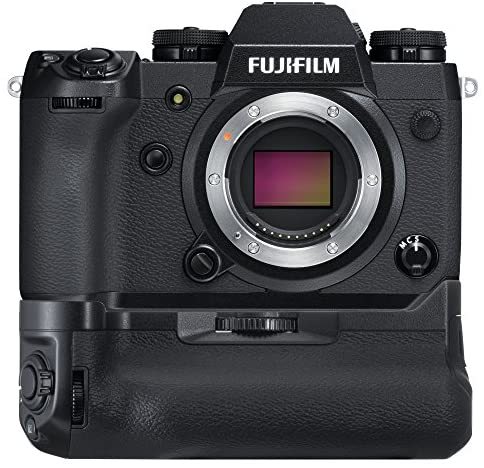
View On WordPress
0 notes